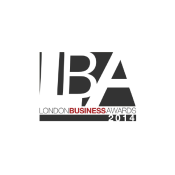Gas Safe Regulations – Flues in Voids
Ensuring compliance with Gas Safe flue regulations is crucial for homeowners, landlords, and gas engineers, especially when dealing with flues in voids. Concealed flues, often hidden in ceiling, wall, or floor voids, can present significant safety risks if not properly inspected. This guide explains legal requirements, practical steps, and best practices, highlighting the role of flue inspection hatches in maintaining gas safety.
In the United Kingdom, ensuring the safety of gas appliances and their associated flue systems is paramount. The Gas Safety (Installation and Use) Regulations 1998, along with industry guidance such as Technical Bulletin 008 (Edition 3), provide a framework for managing concealed flues, particularly those within ceiling or wall voids.
Understanding Flues in Voids
A flue is a conduit that safely channels combustion gases from a gas appliance, like a boiler, to the outside atmosphere. In some properties, especially flats or apartments, flues may be concealed within ceiling or wall voids, making them inaccessible for regular inspection. This concealment can pose significant safety risks, including the potential for carbon monoxide (CO) leaks.
Why flue inspection hatches matter:
Provide access to concealed flues for maintenance and safety checks.
Allow Gas Safe registered engineers to comply with inspection regulations.
Facilitate the identification of damaged or obstructed flue sections.
Legal Framework: Gas Safety (Installation and Use) Regulations 1998
Under Regulation 26(9) of the Gas Safety (Installation and Use) Regulations 1998, gas engineers are legally obligated to examine and confirm the effectiveness of the flue whenever they undertake work on a gas appliance. This includes a visual inspection to ensure the flue is clear and functioning correctly. However, when flues are concealed within voids, this visual inspection becomes challenging, necessitating additional measures to comply with safety standards. Key recommendations include:
- Installation of Inspection Hatches: To facilitate regular inspection and maintenance, inspection hatches should be installed at intervals along the flue run.
- Carbon Monoxide Detection: The installation of carbon monoxide alarms is recommended to provide early warning of potential leaks.
- Regular Maintenance: Routine servicing and checks are essential to ensure the continued safety and effectiveness of the flue system.
What are the Rules for Flue Pipes?
Gas Safe Regulations – Under the Gas Safety (Installation and Use) Regulations 1998:
- Every gas appliance must have a properly installed and functioning flue.
- Engineers must inspect flues whenever they service or install an appliance.
- Flues must be continuous and terminate safely outside the building.
- Concealed flues (in voids or wall cavities) must be accessible for inspection, usually via inspection hatches.
- Any obstruction, damage, or incorrect installation must be reported and rectified immediately.
Building Regulations (Part J) – Approved Document J sets out minimum standards for flue installation:
- Termination: Flues must terminate safely, away from windows, doors, and ventilation inlets.
- Air supply: Combustion air must be sufficient for the appliance.
- Distance from combustible materials: Minimum clearances must be maintained.
- Flue types: Only approved flue types can be used for specific appliances (e.g., room-sealed, balanced flues).
- Support and fixing: Flue pipes must be securely supported and fixed to prevent sagging or movement.
Specific Rules for Flue Pipes
- Material: Flues must use approved materials suitable for the appliance type (stainless steel, aluminium, or coated metal for certain boilers).
- Length & bends: Maximum allowable lengths and number of bends depend on the appliance; exceeding limits can affect efficiency.
- Sealing & joints: Joints must be airtight to prevent leakage of flue gases.
- Termination height: External termination must comply with minimum height distances from rooflines, windows, and boundaries to prevent gas re-entry.
- Access: Concealed flues must have inspection hatches to allow periodic checks.
- Maintenance: Annual inspections and cleaning (if needed) are mandatory, especially for concealed or long flue runs.
Additional Safety Measures
- Carbon monoxide alarms must be installed near appliances with concealed or enclosed flues.
- Fire-rated collars or boxes may be required when flues pass through combustible structures.
- Ventilation: Adequate ventilation must be provided to prevent flue gas spillage.
Building Regulations and Inspection Hatch Requirements
According to Building Regulations Part J:
- Inspection hatches should be a minimum of 300mm x 300mm.
- Hatches should allow safe access to flues in voids for inspection and maintenance.
- Landlords and homeowners are responsible for ensuring these requirements are met to prevent legal issues and protect occupants from carbon monoxide hazards.
Some properties, mainly flats and apartments, have been built with boiler flues which cannot be inspected because they are hidden behind walls or ceilings. The boiler flues that this information relates to are connected to room-sealed fan assisted boilers. If you live in one of these homes, then please read on for more information so you know what to do.
Gas Safe registered specialists need to see the flue. Boiler flues take fumes away from the boiler. It is necessary to carry out essential safety checks on the flue whenever the boiler is worked on. A flue in poor condition, combined with a boiler that is not working properly, could put you and your family in danger from carbon monoxide poisoning, which can cause death or serious injury.
If your boiler is on an outside wall, it is unlikely you have this type of flue. Alternatively, if your engineer can see all the flues, you will not need to take any further action in relation to this matter.
However, if you do have a boiler where all, or part of, the flue cannot be seen, you, or your landlord, will need to arrange for inspection hatches to be fitted. This does not mean that your flue system is suddenly unsafe.
Carbon monoxide alarms are not an alternative to being able to see the flue, and you will still need to have inspection hatches fitted. We recommend that inspection hatches are fitted as soon as you can do so. From 1 January 2013, any Gas Safe registered engineer will turn the boiler off, with your permission, and formally advise you not to use it until they have fitted inspection hatches in places.
Although most of the affected boiler and flue systems are relatively new (installed since 2000), the risk of faults leading to the release of carbon monoxide increases as the system gets older, especially if it is not serviced regularly. It is important that you have your gas appliances serviced annually.
The guidelines issued by Gas Safe recommend that any gas inspection hatches being fitted should be a minimum of 300mm x 300mm and when possible should be installed within 1.5 meters of any joints or bends. This is not always practical in all properties, and in those cases, our engineers will advise you of the best workable solutions for your requirements.
Step-by-Step Guide to Compliance
- Identify concealed flues in your property.
- Install flue inspection hatches to provide accessible inspection points.
- Schedule regular gas safety inspections and flue checks with a registered engineer.
- Maintain accurate records of all inspections and maintenance.
- Install carbon monoxide alarms near concealed flues for early warning of leaks.
By following these steps, you ensure your property complies with Gas Safe flue regulations and protects occupants from hidden risks.
Compliance with Gas Safe regulations for flues in voids is not optional – it is a legal and safety requirement. Proper installation of inspection hatches, routine maintenance, and adherence to industry guidance like TB008 ensures concealed flues remain safe, accessible, and fully compliant. If you have questions about flues in voids in London, we can send a Gas Safe registered engineer to help you out.
Gas Safe Regulations – Flues in Voids
Need help? Hire the London Property Service experts today by giving us a call on 020 3078 5920.




